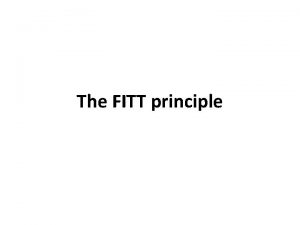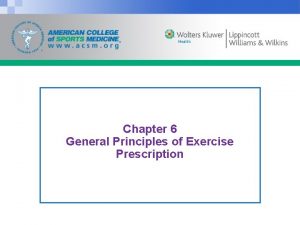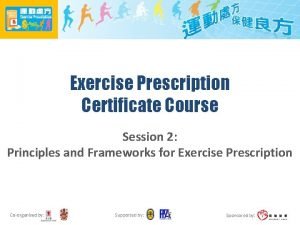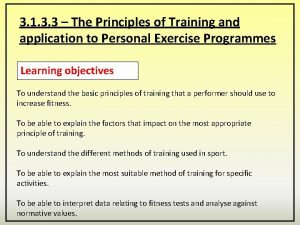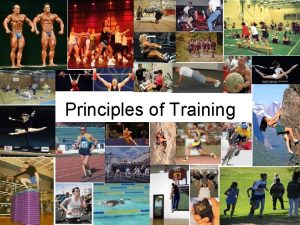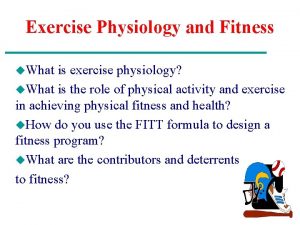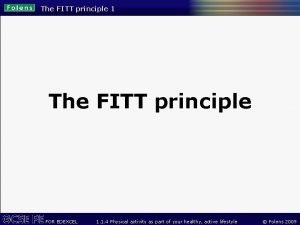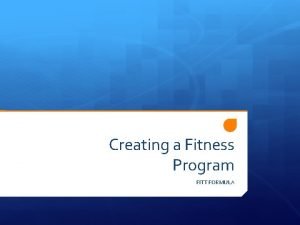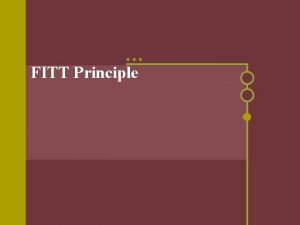FITT Principle A formula in which each letter








- Slides: 8

FITT Principle- A formula in which each letter represents a variable for determining the correct amount of physical activity. • Frequency- How often an activity is performed each week • Intensity- How hard an activity is performed each time • Time- How long an activity is performed each session • Type- Which activities are chosen


As you exercise, periodically: • Take your pulse on the inside of your wrist, on the thumb side. • Use the tips of your first two fingers (not your thumb) to press lightly over the blood vessels on your wrist. • Count your pulse for 10 seconds and multiply by 6 to find your beats per minute. You want to stay between 50 percent to 85 percent of your maximum heart rate. This range is your target heart rate. Know Your Numbers Your maximum heart rate is about 220 minus your age.

Body Composition • This is effected by two factors • The number of calories eaten (energy in) • The amount of activity performed and calories burned (energy out) • A combined effort to eat healthy and be physically active is the best approach to maintain a healthy level • Activities would include cardio endurance and resistance training

Flexibility- The muscles ability to move a joint through a full range of motion. • Muscles stiffen as they get older. • If muscles are never stretched, they tighten and begin to limit movement. • Flexibility is needed for everyday movements, from tying your shoe to throwing a ball.

Cardiorespiratory Endurance- The ability of the heart, blood, and lungs to supply enough oxygen to the muscles during long periods of activity. • The heart is a Muscle. Like any muscle as the heart becomes stronger it is able to pump more blood with each beat, which means the heart can beat at a slower rate and circulate the same amount of blood.

Muscular Strength- The ability of a muscle to push or pull with its total force • Strength is the ability to push or pull with total force. • If a person wants to work strength, they should use enough resistance so that the muscles are challenged to do eight repetitions.

Muscular Endurance- the ability of a muscle to repeat a movement many times or hold a position without rest. If a person can do more than twelve repetitions of an exercise, then they have plenty of strength and are working on muscular endurance.
